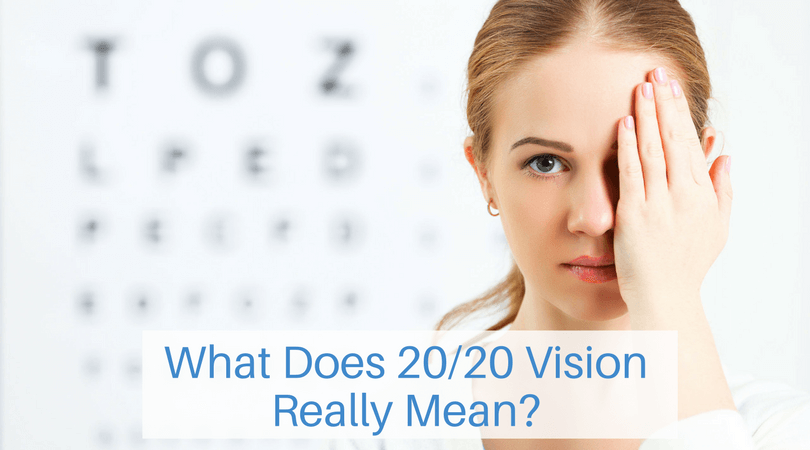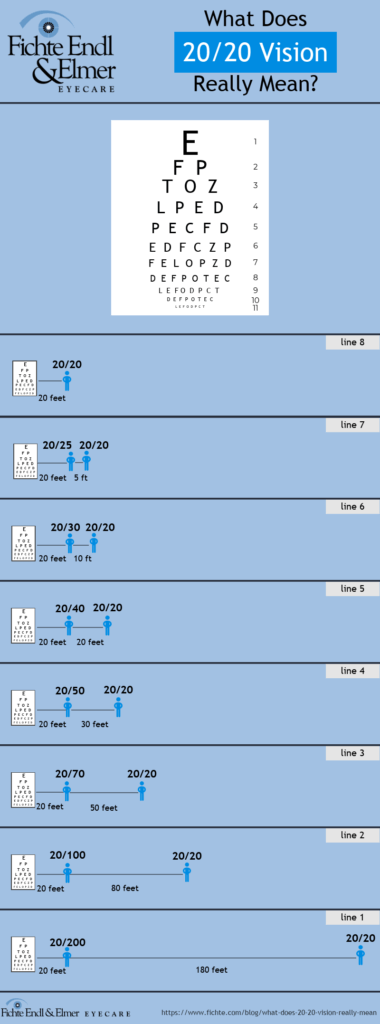During an eye exam, your optometrist tells you your visual acuity or the sharpness and clarity of your vision. You hear numbers like 20/20, 20/40, or even 20/80—but do you know what those numbers mean? Everyone wants 20/20 vision. People opt for glasses, contacts, and even procedures to enhance vision for 20/20 efficacy. So, what does it mean to have 20/20 vision?
The Snellen Chart
Visual acuity is measured by the Snellen chart, which typically features 11 rows of capital letters. It starts with one large letter, and as the rows increase, the font size decreases. Vision is tested by looking at the chart from 20 feet away, a distance at which the eye can see while being relaxed. Then, you cover one eye while reading with the other eye. Each line is coordinated with a vision level, ranging from 20/400 to 20/10.
What Is 20/20 Vision?
What do those levels mean? Let’s break down the numbers. 20/20 vision means a person has optimal vision from a distance of 20 feet. The first number in the term is the distance a person with normal visual acuity stands from the eye chart, measured in feet. The second number is the distance the tested person stands while reading the same line on the eye chart, measured in feet.
Essentially, 20/20 vision is normal visual acuity, or the clarity of your vision, from 20 feet away. So, a person with 20/20 vision can see optimally from 20 feet away from the eye chart.
When someone with 20/30 vision looks at the eye chart from a distance of 20 feet, they see what a person with 20/20 vision can see while looking at the same chart from a distance of 30 feet.
We’ve broken it down visually to further explain the differentiations between visual acuity levels.
It’s important to note that having 20/20 vision does not necessarily mean your vision is perfect. This scale only determines visual clarity from a distance. There are many other factors that come into play when determining visual health including peripheral vision, depth perception, color, coordination, ability to focus, recognition, comprehension, and teaming. A full eye exam will include additional tests to check for these factors, which can determine nearsightedness, farsightedness, cataracts, glaucoma, and other conditions.
Luckily, there are ways to achieve 20/20 vision. At Fichte Endl and Elmer Eyecare it is our passion to help people attain the vision they desire. Contact us today at (716) 564-2020 to schedule an eye exam and discover your level of vision. It’s always a good time to start on the path to improved vision.




